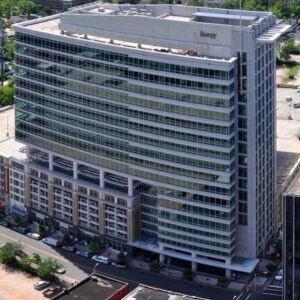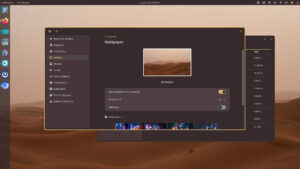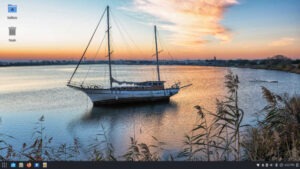After Asahi Linux’s founder and lead developer abruptly quit on Thursday, the project moves forward with seven developers sharing the lead role.

Asahi Linux, a distro which brings Linux to modern Apple machines, announced the resignation of its founder, Hector Martin, and promises to remain an active distro, with seven of the project’s developers collectively taking the lead developer role.
Martin, who started the distro in the early 2020s with the advent of the M1 processor in Apple’s line of computers, cites a series of long-standing battles and disagreements with kernel developers in a blog post announcing his resignation.
“Today’s news is bittersweet,” said a statement on the project’s blog. “We are grateful to [Hector Martin] for kicking off this project and tirelessly working on it these past years. Our community will miss him.”
Keeping Momentum Without Looking Back
In an email exchange with FOSS Force, Asahi’s kernel developer Sven Peter echoed the distro’s collective feelings toward Martin’s resignation.
“It’s very regrettable that he stepped down, and without his significant technical contributions we wouldn’t be where we are today,” Peter said, adding that Martin explains the motives in his blog.
Assuring the current Asahi Linux user base that the distro will continue with sustainable project governance, the seven new project leaders will share equal power, according to online announcement by “the Asahi Linux team”. Development of the distro follows the “lazy consensus” model, meaning “the work happens when the people do it.”
“No matter how talented an individual, a large project cannot rest on a single person’s shoulders,” the Asahi team said while announcing that the seven who will share the leadership role at Asahi Linux are graphics developer Alyssa Rosenzweig, Fedora developer Davide Cavalca, Fedora developer Neal Gompa, audio developer James Calligeros, kernel developer Janne Grunau, kernel developer Sven Peter, and kernel developer chaos_princess.
Understandably, no one that we talked to had anything to say about Martin’s leaving beyond it being regrettable.
“Hector Martin stepping down as the project lead from Asahi Linux is a regrettable but understandable move,” said Gompa, who is also one of the developers responsible for producing the Fedora Asahi remix distribution. “He details his decision on his blog, and I do not have any further comment beyond that.”
Ditto the response we got from Calligeros.
“Hector’s resignation is regrettable but understandable, and I don’t have anything to add beyond what he published to his blog,” he said. “Everything that we have to say on the matter has been said publicly on our own blog.”
The Road Forward
Like most Linux distros, Asahi Linux relies primarily on volunteer contributors. While some contributors have individual Patreon or GitHub Sponsors accounts, individual funding streams cannot sustain a team.
This is where Open Collective comes in. Asahi Linux has established an Open Collective account as a primary funding source for monetary donations to the project. Prior to this, the distro was funded by Martin’s Patreon account, but arrangements have been made to transfer funds.
With the new leadership, Asahi Linux’s priority remains kernel upstreaming. While offering over 1,000 patches for Apple Silicon – otherwise known as the M-series of Apple processor – in the past, the upstream kernel moves fast, requiring the distro to constantly rebase its changes on top of upstream changes while battling merge conflicts and regressions.
Another sustainability issue is testing, ensuring that every supported feature works on all supported hardware. The time-intensive manual testing will be augmented by continuous integration that automatically tests Asahi Linux on the many devices that Apple has produced in this decade.
So what does 2025 have in store for Asahi Linux?
The website states that while Asahi Linux is working on the current M3 and M4 Apple chips, the distro expects to release DA alt mode, which is required for external monitors over USB-C on laptops without an HDMI port; Sparse images in Asahi’s Vulkan driver, enabling DirectX 12 capability; and internal microphone usability.







“A number of my friends who belong in these very high upper brackets have suggested to me, more in sorrow than in anger, that if I am reelected they will have to move to some other Nation because of high taxes here. I shall miss them very much” – FDR
Sounds like Hector will be missed very much in the same sense.